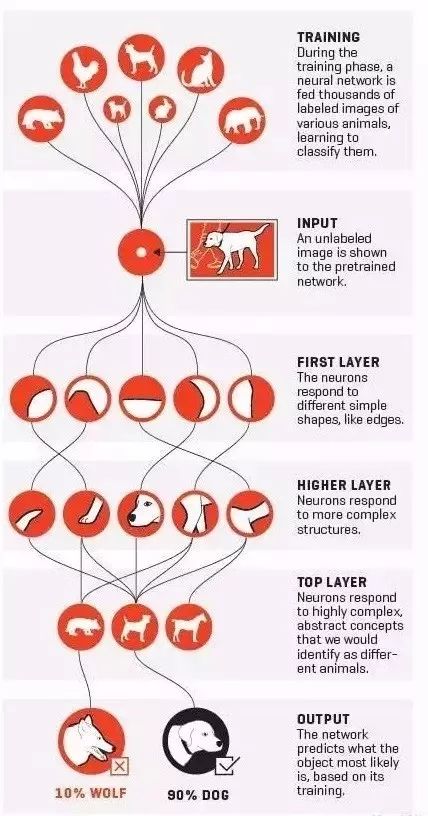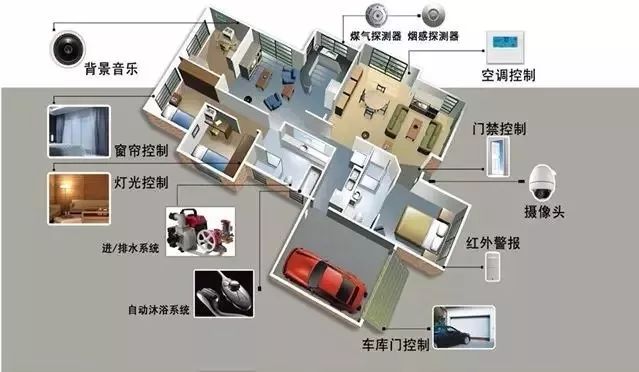As an important part of the computing vision technology system, image recognition has always been valued. Microsoft announced a milestone two years ago: its image system recognizes images at a lower error rate than humans. Nowadays, image recognition technology has reached a new height. This depends on more open data, more open source of basic tools, updated iterations of the industry chain, and advances in high-performance AI computing chips, depth cameras and excellent deep learning algorithms, all of which deepen image recognition technology. Development has provided a constant source of momentum.
In fact, for image recognition technology, everyone is no stranger to face recognition, iris recognition, fingerprint recognition, etc. belong to this category, but image recognition is far more than that, it covers biometrics, object and scene recognition, video recognition three categories. Up to now, although it is far from ideal, the increasingly mature image recognition technology has begun to explore applications in various industries.
01
Web search

Take Facebook and Google as examples. Recently, Facebook has created a professional computer vision platform Lumos for image and video understanding. This platform can provide visual search function for the entire social network, which will improve the user experience on social networks from two aspects. : Search based on the image itself (rather than picture tags and photo time); an upgraded automatic picture description system (which can describe picture content to visually impaired people). For Google, image recognition has been overcome. Its next challenge is video recognition. The goal is to enhance image recognition technology and eventually identify and search the original content of the video itself to improve the video recommendation service. In addition, Snap and Twitter are also working on this.
02
Smart home

In the smart home field, images are acquired by a camera, and then the image content is recognized by image recognition technology to make different responses. For example, we installed a camera at the door. When an object appears in the camera range, the camera automatically captures the image for identification. If it is found to be a suspicious person or object, it can promptly report to the owner. If the image matches the owner's face, it will automatically open the door for the host. There are also intelligent robots for home use. Image recognition technology can identify objects and achieve follow-up with people. With artificial intelligence system, it can distinguish which owner you are and can make some simple interactions. For example, if it is detected as an elderly person at home, it may measure blood pressure for you. If it is a child, it may tell you a story.
03
E-commerce shopping
The “similar (photo recognition/scanning recognition)†search function used by consumers during online shopping is based on image recognition technology. When the consumer stops the mouse on the item of interest, he can choose to view similar styles; The adjustment algorithm can also better guess the intention of the consumer. Even if the search result cannot provide a completely matched product, it will recommend the most relevant product for the consumer and try to satisfy the consumer's shopping demand. This is also one of the ways for merchants to divert from the outside world and increase the viscosity of mobile users.
04
Agroforestry
In the agriculture and forestry industry, image recognition technology has been applied in many aspects, such as forest survey, image collection by drone, and analysis of forest tree species coverage and forest health through image analysis system. A more scientific mining program can be made. In terms of log inspection, image recognition can quickly judge the tree species, advantages and disadvantages, and specifications of wood, which can save a lot of human participation.
05
financial

In the financial sector, identity and smart payments will improve the efficiency and quality of identity security and payment. For example, in traditional finance, when applying for bank loans or securities account opening, users must go to the physical store to verify identity information and complete the face-to-face check. Nowadays, through face recognition technology, users only need to open the mobile phone camera and take a self-portrait. The system will do a live detection and perform a series of verification, matching and judgment. Finally, it will judge whether the photo is the user's own operation. Complete identity verification.
06
Security

Image recognition is widely used in the security field. In the future, in the transformation of software and hardware deployment to the back-end software management platform, the image recognition system will become the core link to build a smart city. For example, face recognition is an indispensable part of video surveillance in the era of intelligent security. It can directly help users extract "people" information from video images, which greatly enhances the value of the monitoring system and makes the monitoring system no longer " Go to the video, and let it go to "recognize people."
07
Medical
In the future, the application of image recognition technology to the medical field will enable X-ray, MRI and CT scan images to be more accurately and quickly resolved, from diagnosis to cancer prevention, to the discovery of new drugs for life-saving and life-saving. A radiologist may see tens of thousands of scanned images in his lifetime, but a computer may look at tens of thousands of sheets. Let the computer solve the problem of the image, which doesn't sound crazy.
08
Entertainment supervision
Taking video live broadcast as an example, the review and identification of live content can be carried out in the following steps: identifying whether there are human objects in the image, counting the number of people; identifying the gender and age range of the characters in the image; identifying the skin color of the person and the degree of exposure of the limbs; Identify the contours of the person's limbs and analyze the action behavior. In addition to image recognition, key features can be extracted from the audio information to determine whether there is sensitive information; real-time analysis of the content of the barrage text, determining whether the current video has irregular behavior, and dynamically adjusting the image acquisition frequency.
In addition, in the industries of robots, unmanned homes, autonomous driving, transportation, industrial production lines, food testing, education, and antiques, image recognition has different degrees of application.
It is estimated that by 2020, the biometrics technology market will reach 25 billion US dollars, with an average annual growth rate of about 14% in five years. Among them, face recognition has the fastest growth rate, from $900 million in 2015 to 2020. $2.4 billion; machine vision is an important part in object and scene recognition. It is expected that the global machine vision system and component market will reach $5 billion in 2018; video recognition is mainly used in the security industry, and the overall year of China in the next five years. The growth rate will remain at around 20%, and it is expected to reach one trillion yuan by 2020. Today, with the rapid spread of intelligent devices and applications, image recognition is bound to become a key to open the door to technology and the Internet of Everything.
Network Accessories,Wifi Adapter,Fiber Optic Network Components,Splitter Fiber Optic
Cixi Dani Plastic Products Co.,Ltd , https://www.dani-fiber-optic.com